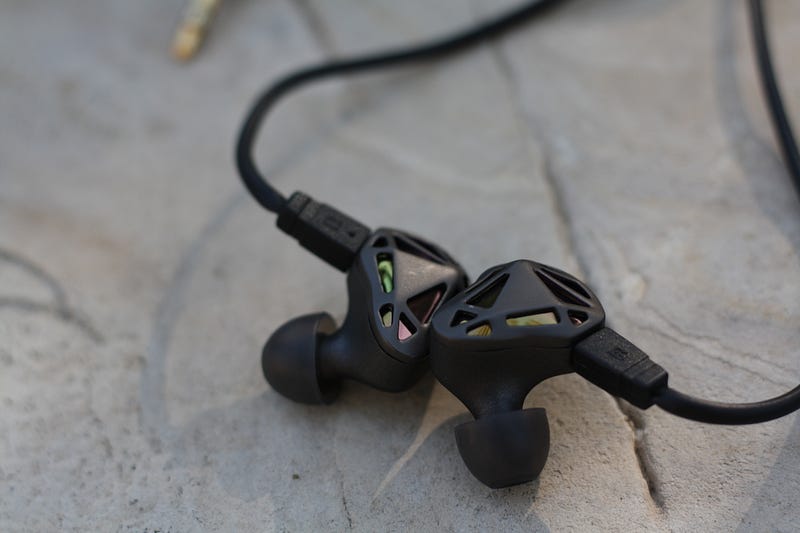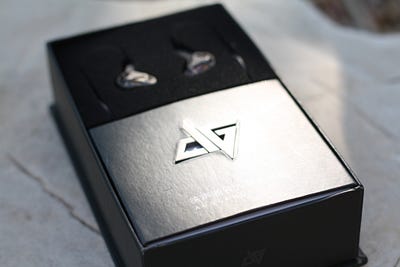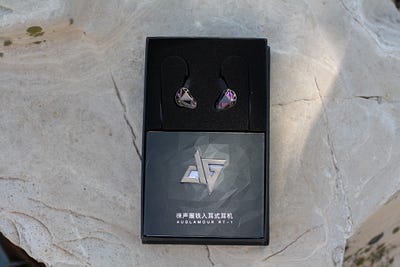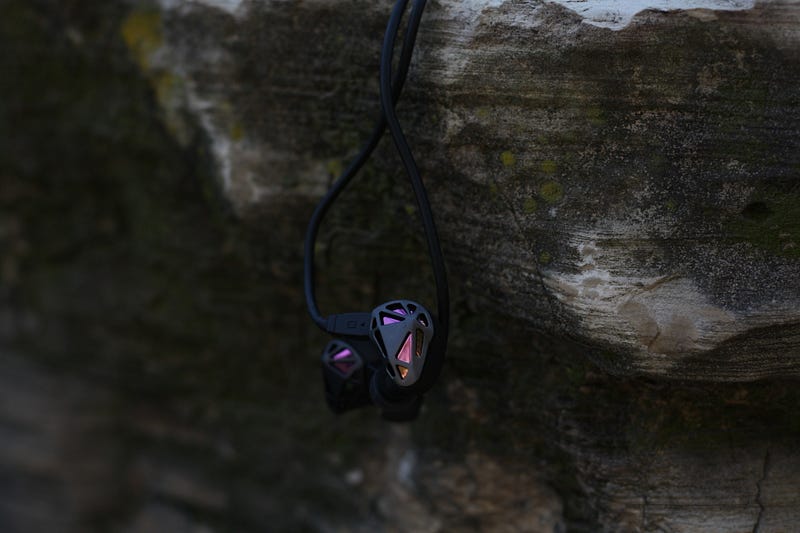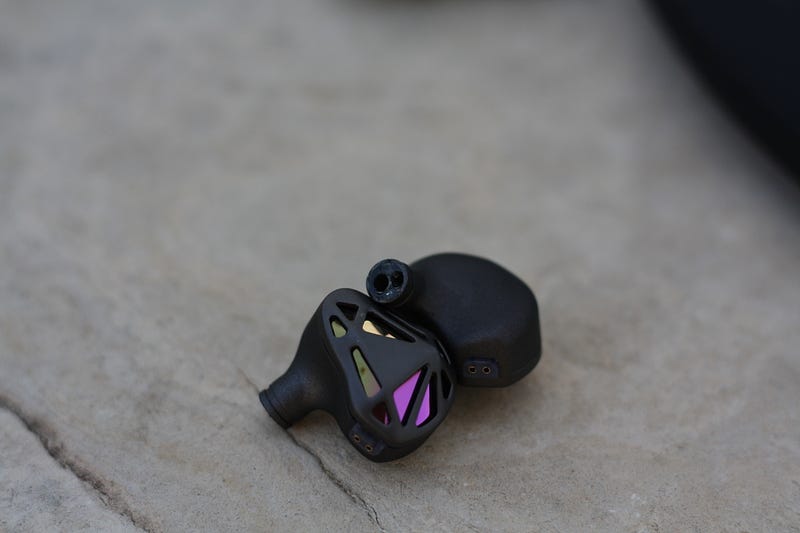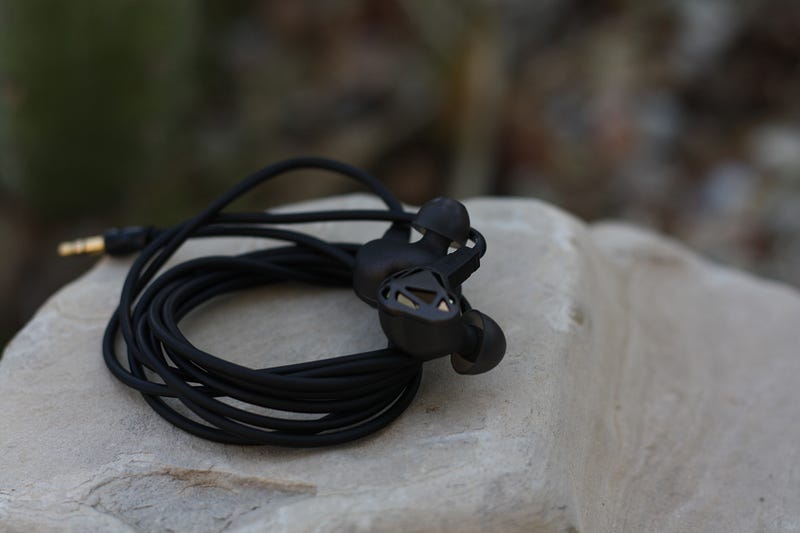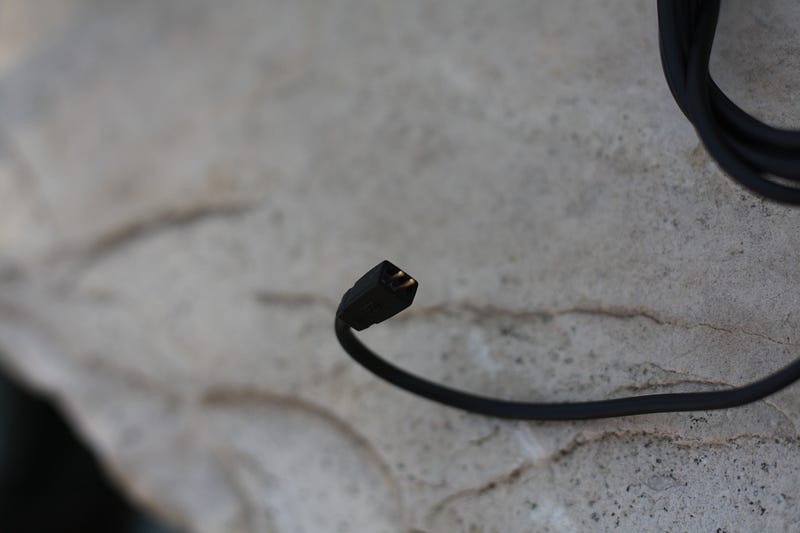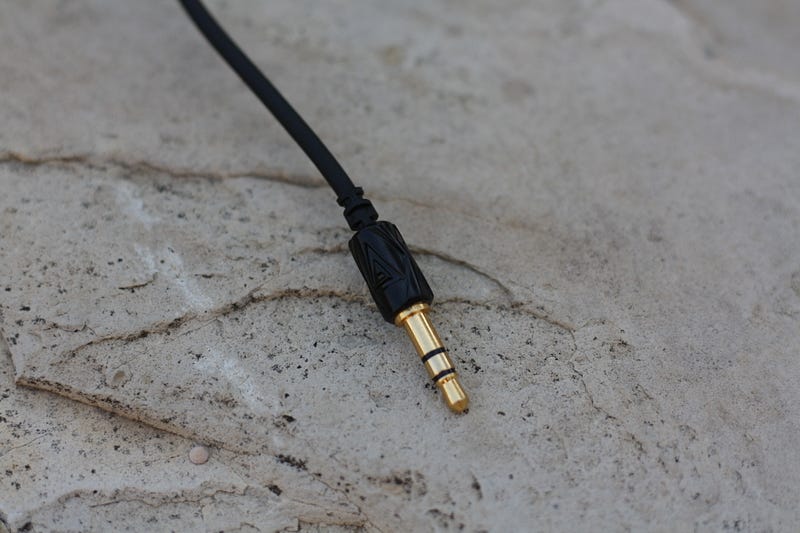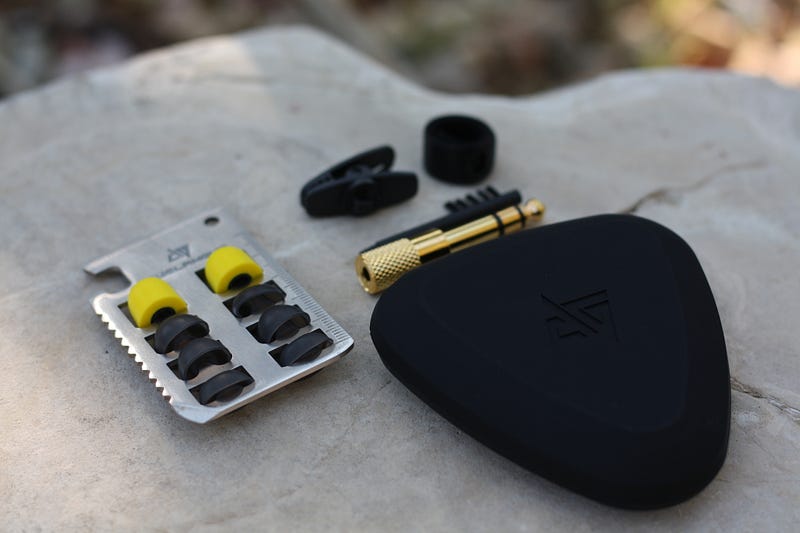Introduction
Auglamour is a Chinese company that produces in-ear monitors, earbuds and amplifiers. They started out with the AG-R1S and AG-R8. Recently, Auglamour has released a new iem in the RT-1. I would like to thank Auglamour and Penon Audio for the review unit of RT-1. At the moment, you can purchase the RT-1 from https://penonaudio.com/auglamour-rt-1.html .

Specifications
The RT-1 comes in a black package with a transparent cover. After removing the cover, there is the iem. Below the iem, there are 3 packages and instruction manual. The big package contains a rubber carrying pouch while the 2 small packages contain cable wrap, headphone adapter, shirt clip, cleaning tool and tips.


IEM Build & Design
The RT-1 is made of plastic and there is a smooth surface. On the faceplate, there is a geometric design with different colors. The shell has a matte grey color and it is light weight. The nozzle is slightly angled with 2 bores. The iem utilizes 2 pins connectors. There is an ergonomic design which helps to ensure a good fit. The RT-1 has an unique faceplate with good build quality.
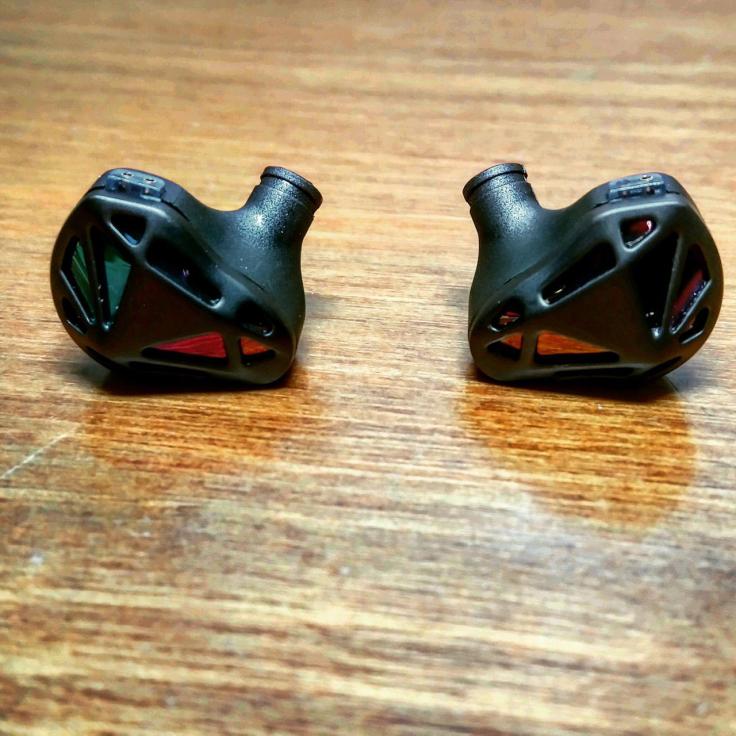


Cable Build & Design
The cable is quite ordinary and on each of the connector, there is a L & R marking on the left and right respectively. The connectors have a black housing with grip. There is a memory wire area section. There is no chin slider and the y-splitter is small with brand logo printed on it. It is black in color. Lastly, the jack is straight 3.5mm gold plated with strain relief. The jack has a nice design to its housing.
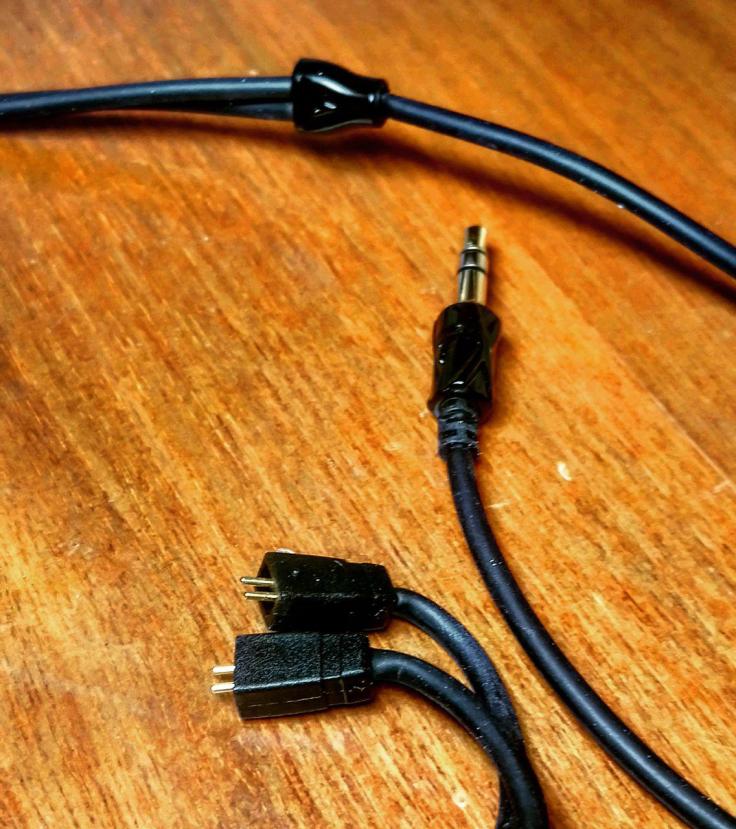
Sound Analysis
Lows
The RT-1 has a moderate amount of sub-bass quantity with a nice extension but it is not very deep. The rumble is fairly quick to add impact. The mid-bass has good quantity and it contributes to the slam to have a weighted feel. The bass decay is moderate and each bass note is presented with a control. Bass texture is smooth. There is warmth to the bass presentation. It does not have the most authority but the execution is smooth.
Mids
The midrange on the RT-1 is slightly recessed. The lower mids does not have much quantity and the lack of body prevents male vocals from being expressed in a thick manner. It is presented in a laid-back manner. Moving on to the upper mids, it has a slight forwardness to it. The definition is decent. Details retrieval has a moderate standard to it. There is a good control on the upper mids and female vocals are not shouty. The midrange is presented politely.
Highs
The treble is extended moderately and there is no sibilance and harshness. The amount of air rendered is moderate and the presentation does not have a very dense feel to it. There is a lack of sparkle. The treble has a moderate definition.
Soundstage
The RT-1 has a decent soundstage. There is a natural expansion to it but the width does not have a great magnitude. The depth has an average amount of space rendered. It tends to get congested for busier tracks.

Comparisons
Auglamour RT-1 vs Shozy Hibiki
The RT-1 has more sub-bass quantity but the Hibiki has the extra extension. The Hibiki is able to showcase its bass definition. The decay on the Hibiki is quicker and each bass note is delivered with engagement. Rumble on the RT-1 is slightly slower. Bass texture on the RT-1 is smoother with soothingness. The mid-bass on the RT-1 has slightly more quantity and the slam improves the dynamics. The bass presentation on the RT-1 takes on a matured approach. The lower mids on the RT-1 has extra body than the Hibiki and male vocals are expressed rather well. The upper mids on the Hibiki is more forward and it helps to present female vocals with crisp. The definition on the Hibiki is slightly better. However, RT-1 is able to showcase a good control on the female vocals. Moving on to the treble section, the Hibiki has more energy than the RT-1 while the RT-1 operates in a smooth approach. The amount of air rendered on the Hibiki has a greater amount. The details retrieval on both is similar. For the soundstage, RT-1 has a more natural expansion. Hibiki has edge for the width and the depth on both is very similar. Positioning of vocals and instruments is slightly more accurate on the Hibiki. The RT-1 is presented with a smooth musicality to it while the Hibiki operates with extra technicality.
Auglamour RT-1 vs Advanced M4
The RT-1 has more sub-bass quantity than the M4 but the M4 extends its sub-bass greater than the RT-1. There is more punch from the M4. The mid-bass on the RT-1 has more body and this allows the slam to be more weighted. The M4 excels in its agility with a quicker bass decay. Bass texture on the RT-1 is smoother and it is relaxing. The lower mids on the RT-1 has more body and it sounds fuller than the M4. This improves male vocals. The upper mids on the M4 has extra forwardness and clarity. The RT-1 has more body which helps to maintain female vocals. This showcases a good finesse and prevents it from being shouty. The M4 demonstrates its crisp and definition. The RT-1 has a more organic performance than the M4 with intimacy. The details retrieval is very similar on both iems but M4 has the slight edge with a more accurate representation. Next, in the treble section, the M4 has more extension than the RT-1 with a greater amount of air rendered. The RT-1 has stronger mastery in its treble. The M4 is prone to sibilance and harshness. Treble on the RT-1 is much smoother with extra body. Lastly, the RT-1 has a more realistic feel to its stage expansion and M4 excels in the width magnitude. The depth on the RT-1 is better.
Auglamour RT-1 vs Earnine EN120
The RT-1 has more sub-bass quantity than the EN120 with a better extension. The RT-1 is capable of its sub-bass reproduction. The mid-bass on the RT-1 is fuller and the extra body gives the slam a weighted feel. It is able to create a more dynamic performance. Bass decay on the RT-1 is similar while the bass texture on the RT-1 is smoother. There is more liveliness on the RT-1. The dynamic driver on the RT-1 helps in the bass reproduction. The lower mids on the RT-1 has more body than the EN120 and male vocals benefit. For the upper mids section, RT-1 has similar forwardness with a tighter control. Female vocals are presented in a more organic manner than the EN120. There is a good expression of it. The midrange on the RT-1 is cleaner with better transparency. Next, in the treble section, the RT-1 has more extension with a smoothness. The treble articulation on both is pretty accurate. Lastly, for the soundstage, the RT-1 has a more natural expansion with better width and similar depth.
Conclusion
The RT-1 is an unique iem that is able to present its bass in a warm and smooth manner. The midrange is laid-back and coupled with the controlled treble, there is a nice calming effect. In addition, the RT-1 has an unique design with good fit. The accessories are not lacking at all. The Auglamour RT-1 is a nice hybrid iem to listen to.
For more reviews, visit https://audio123blog.wordpress.com/ .
Auglamour is a Chinese company that produces in-ear monitors, earbuds and amplifiers. They started out with the AG-R1S and AG-R8. Recently, Auglamour has released a new iem in the RT-1. I would like to thank Auglamour and Penon Audio for the review unit of RT-1. At the moment, you can purchase the RT-1 from https://penonaudio.com/auglamour-rt-1.html .

Specifications
- Driver: 1 Dynamic Driver (10 mm) + 1 Balanced Armature Driver
- Impedance: 60 ohm
- Frequency Response: 20 Hz -20 kHz
- Sensitivity: 105DB ± 3DB
The RT-1 comes in a black package with a transparent cover. After removing the cover, there is the iem. Below the iem, there are 3 packages and instruction manual. The big package contains a rubber carrying pouch while the 2 small packages contain cable wrap, headphone adapter, shirt clip, cleaning tool and tips.


IEM Build & Design
The RT-1 is made of plastic and there is a smooth surface. On the faceplate, there is a geometric design with different colors. The shell has a matte grey color and it is light weight. The nozzle is slightly angled with 2 bores. The iem utilizes 2 pins connectors. There is an ergonomic design which helps to ensure a good fit. The RT-1 has an unique faceplate with good build quality.



Cable Build & Design
The cable is quite ordinary and on each of the connector, there is a L & R marking on the left and right respectively. The connectors have a black housing with grip. There is a memory wire area section. There is no chin slider and the y-splitter is small with brand logo printed on it. It is black in color. Lastly, the jack is straight 3.5mm gold plated with strain relief. The jack has a nice design to its housing.

Sound Analysis
Lows
The RT-1 has a moderate amount of sub-bass quantity with a nice extension but it is not very deep. The rumble is fairly quick to add impact. The mid-bass has good quantity and it contributes to the slam to have a weighted feel. The bass decay is moderate and each bass note is presented with a control. Bass texture is smooth. There is warmth to the bass presentation. It does not have the most authority but the execution is smooth.
Mids
The midrange on the RT-1 is slightly recessed. The lower mids does not have much quantity and the lack of body prevents male vocals from being expressed in a thick manner. It is presented in a laid-back manner. Moving on to the upper mids, it has a slight forwardness to it. The definition is decent. Details retrieval has a moderate standard to it. There is a good control on the upper mids and female vocals are not shouty. The midrange is presented politely.
Highs
The treble is extended moderately and there is no sibilance and harshness. The amount of air rendered is moderate and the presentation does not have a very dense feel to it. There is a lack of sparkle. The treble has a moderate definition.
Soundstage
The RT-1 has a decent soundstage. There is a natural expansion to it but the width does not have a great magnitude. The depth has an average amount of space rendered. It tends to get congested for busier tracks.

Comparisons
Auglamour RT-1 vs Shozy Hibiki
The RT-1 has more sub-bass quantity but the Hibiki has the extra extension. The Hibiki is able to showcase its bass definition. The decay on the Hibiki is quicker and each bass note is delivered with engagement. Rumble on the RT-1 is slightly slower. Bass texture on the RT-1 is smoother with soothingness. The mid-bass on the RT-1 has slightly more quantity and the slam improves the dynamics. The bass presentation on the RT-1 takes on a matured approach. The lower mids on the RT-1 has extra body than the Hibiki and male vocals are expressed rather well. The upper mids on the Hibiki is more forward and it helps to present female vocals with crisp. The definition on the Hibiki is slightly better. However, RT-1 is able to showcase a good control on the female vocals. Moving on to the treble section, the Hibiki has more energy than the RT-1 while the RT-1 operates in a smooth approach. The amount of air rendered on the Hibiki has a greater amount. The details retrieval on both is similar. For the soundstage, RT-1 has a more natural expansion. Hibiki has edge for the width and the depth on both is very similar. Positioning of vocals and instruments is slightly more accurate on the Hibiki. The RT-1 is presented with a smooth musicality to it while the Hibiki operates with extra technicality.
Auglamour RT-1 vs Advanced M4
The RT-1 has more sub-bass quantity than the M4 but the M4 extends its sub-bass greater than the RT-1. There is more punch from the M4. The mid-bass on the RT-1 has more body and this allows the slam to be more weighted. The M4 excels in its agility with a quicker bass decay. Bass texture on the RT-1 is smoother and it is relaxing. The lower mids on the RT-1 has more body and it sounds fuller than the M4. This improves male vocals. The upper mids on the M4 has extra forwardness and clarity. The RT-1 has more body which helps to maintain female vocals. This showcases a good finesse and prevents it from being shouty. The M4 demonstrates its crisp and definition. The RT-1 has a more organic performance than the M4 with intimacy. The details retrieval is very similar on both iems but M4 has the slight edge with a more accurate representation. Next, in the treble section, the M4 has more extension than the RT-1 with a greater amount of air rendered. The RT-1 has stronger mastery in its treble. The M4 is prone to sibilance and harshness. Treble on the RT-1 is much smoother with extra body. Lastly, the RT-1 has a more realistic feel to its stage expansion and M4 excels in the width magnitude. The depth on the RT-1 is better.
Auglamour RT-1 vs Earnine EN120
The RT-1 has more sub-bass quantity than the EN120 with a better extension. The RT-1 is capable of its sub-bass reproduction. The mid-bass on the RT-1 is fuller and the extra body gives the slam a weighted feel. It is able to create a more dynamic performance. Bass decay on the RT-1 is similar while the bass texture on the RT-1 is smoother. There is more liveliness on the RT-1. The dynamic driver on the RT-1 helps in the bass reproduction. The lower mids on the RT-1 has more body than the EN120 and male vocals benefit. For the upper mids section, RT-1 has similar forwardness with a tighter control. Female vocals are presented in a more organic manner than the EN120. There is a good expression of it. The midrange on the RT-1 is cleaner with better transparency. Next, in the treble section, the RT-1 has more extension with a smoothness. The treble articulation on both is pretty accurate. Lastly, for the soundstage, the RT-1 has a more natural expansion with better width and similar depth.
Conclusion
The RT-1 is an unique iem that is able to present its bass in a warm and smooth manner. The midrange is laid-back and coupled with the controlled treble, there is a nice calming effect. In addition, the RT-1 has an unique design with good fit. The accessories are not lacking at all. The Auglamour RT-1 is a nice hybrid iem to listen to.
For more reviews, visit https://audio123blog.wordpress.com/ .


























